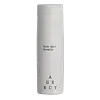What's inside
What's inside
 Key Ingredients
Key Ingredients

 Benefits
Benefits

 Concerns
Concerns

No concerns
 Ingredients Side-by-side
Ingredients Side-by-side

Hydroquinone 4%
StabilisingKojic Acid 4%
AntioxidantAzelaic Acid 3%
BufferingResveratrol
AntioxidantWater
Skin ConditioningCetearyl Alcohol
EmollientPolysorbate 60
EmulsifyingIsohexadecane
EmollientIsododecane
EmollientC13-15 Alkane
SolventGlyceryl Stearate
EmollientPEG-75 Stearate
Polyacrylate-13
Polyisobutene
Polysorbate 20
EmulsifyingPolyurethane-39
Stearyl Behenate
EmollientCetyl Alcohol
EmollientTocopheryl Acetate
AntioxidantAscorbic Acid
AntioxidantSodium Bisulfite
AntioxidantBenzoic Acid 0.09%
MaskingSorbic Acid 0.09%
PreservativeBHT
AntioxidantPropanediol
SolventHydroquinone 4%, Kojic Acid 4%, Azelaic Acid 3%, Resveratrol, Water, Cetearyl Alcohol, Polysorbate 60, Isohexadecane, Isododecane, C13-15 Alkane, Glyceryl Stearate, PEG-75 Stearate, Polyacrylate-13, Polyisobutene, Polysorbate 20, Polyurethane-39, Stearyl Behenate, Cetyl Alcohol, Tocopheryl Acetate, Ascorbic Acid, Sodium Bisulfite, Benzoic Acid 0.09%, Sorbic Acid 0.09%, BHT, Propanediol
Ingredients Explained
These ingredients are found in both products.
Ingredients higher up in an ingredient list are typically present in a larger amount.
Azelaic acid is a multitasker ingredient that helps treat acne, pigmentation, and irritation. It is a great option for sensitive skin.
What makes azelaic special?
The best thing about azelaic acid is it's gentleness. It's generally well-tolerated and safe to use alongside other actives like niacinamide or salicylic acid.
Unlike AHAs, azelaic acid will not make you photosensitive/sun sensitive.
You can find this ingredient naturally occurring in grains like wheat, rye, and barley. In cosmetics, azelaic acid is typically lab-made, which is more stable and effective.
Learn more about Azelaic Acid